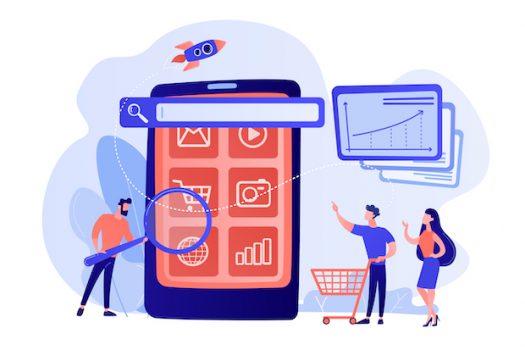Unlocking the True Revenue Potential of Retail Media
by on 27th Mar 2023 in News

In this exclusive byline, Julie Jeancolas, Global Head of Product, Strategy & Partnerships - Retail Media & Personalisation at dunnhumby outlines how retailers can make the most of the rapidly growing retail media opportunity.
How fast things change. As recently as 2019, dunnhumby commissioned Forrester to carry out an in-depth review of attitudes towards the monetisation of data and media within the global grocery industry. Among the many conclusions reached in that paper was the assertion that retailers around the world were “missing out on hundreds of millions in new revenue… by not monetising their media assets.”
Fast forward to today and, while part of that sentiment still rings true, there’s little doubt that retail media is now firmly entrenched within the commercial affairs of most large grocery retailers. USD$110bn (~£89.9bn) was spent by advertisers on retail media in 2022, with the midterm trajectory looking more compelling still; spending growth of around 60% should put us on the path to a near $200bn industry by 2027.
Just where are those billions of dollars coming from, though? In grocery retail, the answer in the vast majority of cases is obviously consumer packaged goods (CPG) companies. More specifically, that money comes from what are typically very healthy brand, digital, trade, and shopper CPG marketing budgets.
While those budgets may be healthy, retailers still face a significant challenge when it comes to maximising the true revenue potential of their media assets. That’s because, as with any revenue stream, there’s a distinct difference between genuinely “new” investment and that which has simply been diverted from existing CPG spend in the form of shopper and trade marketing budgets.
In an ideal situation, retailers want to attract as much new investment as possible, building upon – rather than cannibalising – their existing revenues. In spite of that, research suggests that anywhere between 16% and 40% of current retail media spend is simply money that has been shifted away from trade and shopper marketing budgets. That’s a clear problem, because it speaks to a significant missed opportunity to create fresh revenue streams.
Ultimately, this shouldn’t be the case. By virtue of a closed loop that links a shopper’s media exposure and their purchasing behaviours, retail media makes it far easier to demonstrate ROAS than many other forms of marketing. If any discipline should be able to attract brand new investment, it should be retail media.
The issue then is not one of performance, but one of positioning. And it’s here that I think many retailers need to focus.
Connected media and smarter collaboration
To really unlock the potential of their retail media programmes, retailers need two things: a more cohesive approach to their media solutions, and a smarter framework for collaboration with their CPG partners. Let’s start with the first.
Last December, I wrote a blog exploring the “six pillars” underpinning retail media success. Of those, it’s the third – full-funnel media solutions – that has the greatest relevance here.
It may sound simple, but if they want to attract investment from brand and digital marketers, then retailers also need to offer media solutions that align to the needs of those teams. Creating a media solutions portfolio that only serves certain parts of the marketing funnel will ultimately reduce the appeal of that offering. As a result, full-funnel solutions that can deliver connected customer journeys are now an essential capability.
A cohesive proposition alone is not enough, however. To reduce the risk of cannibalisation, retailers also need to ensure that they’re engaging with brands in the right way when it comes to media. Today, retailers tend to use one of three different engagement models to do that:
- Self-organised
This is a very traditional engagement model, one in which the retailer’s merchant teams drive discussions with CPG trade marketing teams, while a media sales team handles the needs of CPG-side brand and shopper marketing teams.
Although there’s no link between how much each side chooses to spend, these teams do collaborate on an annual promotional calendar (investing in media when a brand is featured in an in-store or online promotion for instance). In this model, CPGs normally receive ad hoc discounts on media rates based on individual campaign negotiations.
- Media-led
Here, the relationship between the retailer and the CPG revolves around a Joint Business Plan (JBP). Importantly, though, the retailer’s commercial and media teams each negotiate a separate JBP. The media team will sign a JBP with the CPG’s CMO, for instance, which might include a multi-year incentivisation programme that unlocks bigger discounts on media the more they spend.
These programmes are built on tiering systems. These unlock the reduced rates mentioned above, provide early access to new advertising products, and other (custom) benefits. Revenue targets and other KPIs are reviewed quarterly.
- Holistic
This is a fully connected approach, one which involves the development of unified trade and media JBPs. Not only are the trade and media elements clearly labelled within these JBPs, but CPGs are given clear incentives to grow their spend on each as well.
This allows CPGs to see the full value that they get by working with a retailer, helping them to optimise spend across the entirety of the funnel and allocate dollars where they’re needed most (rather than where the budget “sits”).
So, which of these is best? There’s the catch; there are no right or wrong answers here. Some models simply work better for different retailers and CPGs based on their own organisational structures and objectives, and the only way to establish which is “best” is to understand your own internal dynamics and supplier relationships.
That said, one thing is very definitely true: whichever model they choose, retailers must do everything in their power to minimise the risk of cannibalisation, enabling them to attract more revenue from the right places and grow their media operations effectively.
Ad SpendDataMarketingRetailRetail Media








Follow ExchangeWire